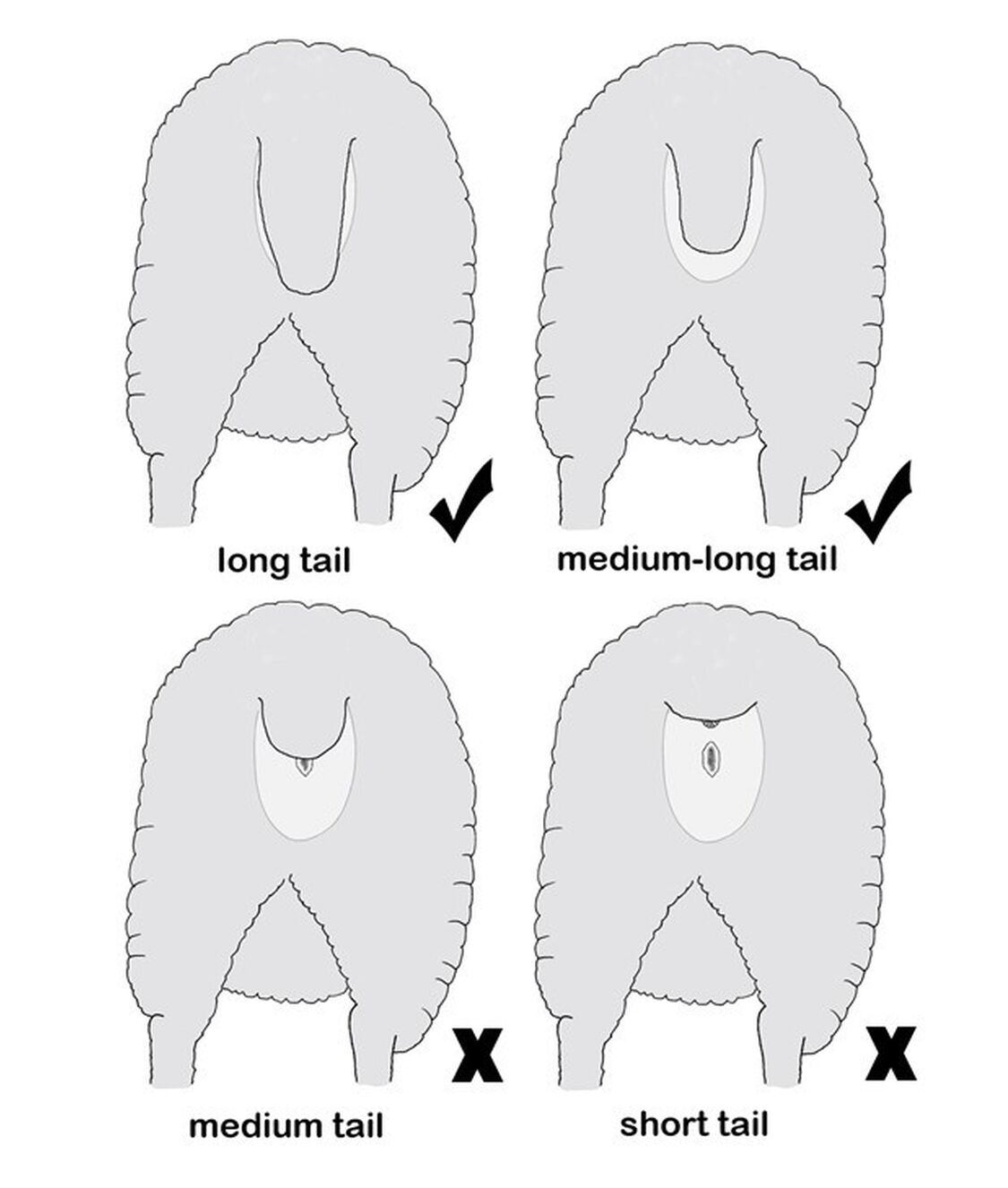Courtesy of Meat & Livestock Australia
Tail docking of lambs is a common practice for producers as it often plays a role in ensuring animal welfare. However, if done incorrectly, it can pose a risk to lamb survival.
Veterinarian Dr Joan Lloyd from Joan Lloyd Consulting Pty Ltd said while tail docking is a longstanding practice to reduce lifetime susceptibility to flystrike in sheep, it can have the opposite effect if the tail is cut too short.
Other potential impacts on health because of a too-short tail include:
slower rate of healing after docking
greater susceptibility to infection that increases the risk of arthritis
increases the risk of rectal and uterine prolapse
makes animals more susceptible to tail cancer (squamous cell carcinoma).
“When tails are docked to the recommended length, sheep are able to lift them – reducing both dag accumulation and the risk of breech flystrike,” Joan said.
When to dock
The ideal age for tail docking lambs is 2 to 8 weeks.
“Younger lambs are easier and safer to handle, meaning docking can be done faster and with less stress for both lambs and the operator,” Joan said.
“They also have smaller tail circumference, providing less sensitive tissue which results in a smaller wound.
“If docking is delayed until after eight weeks of age, healing will be slower and the risk of infection will increase.”
Lambs being sold for slaughter prior to high-risk flystrike or dag periods may be exempt from tail docking.
Best practice
Tail length recommendations were developed from studies conducted by the CSIRO in the 1930s and 1940s and remain relevant today.
“These studies included more than 10,000 Merino sheep across five properties in eastern Australia and gave results that suggested docking tails either medium-long or long gave significantly better protection and healing quality then medium or short tails,” Joan said.
“In fact, leaving the tail undocked provided better protection against breech flystrike than docking to give medium or short tails.”
Best practice for tail docking involves:
docking at a minimum of three, preferably four, palpable joints – non-mulesed lambs should have their tails docked no shorter than the fourth
keeping the caudal folds (flaps of skin that attach the underside of the tail to the lamb’s body) intact
for ewes, ensure the healed tail covers the vulva.
Joan recommends either a gas-heated knife or the Numnuts® device is used. However, tail-docking rings such as those used with the Numnuts® device do not remove the woolly skin on the tip of the tail.
“The lamb-marking knife is not a best practice method for tail docking and using mulesing shears is unacceptable,” Joan said.
“They create a higher risk of bleeding, infection and misshapen deviated tails, so it's important producers use the right tools to ensure the right results.”
For aftercare following tail docking, Joan advises the following:
Gently release the lamb onto clean grass so it lands on its feet.
Return lambs to their mothers as soon as possible – well before dark.
Check lambs daily (without disturbance which could cause mismothering) for 10 days after docking.
Yard or catch and restrain any lambs which appear abnormal and treat any complications early.
